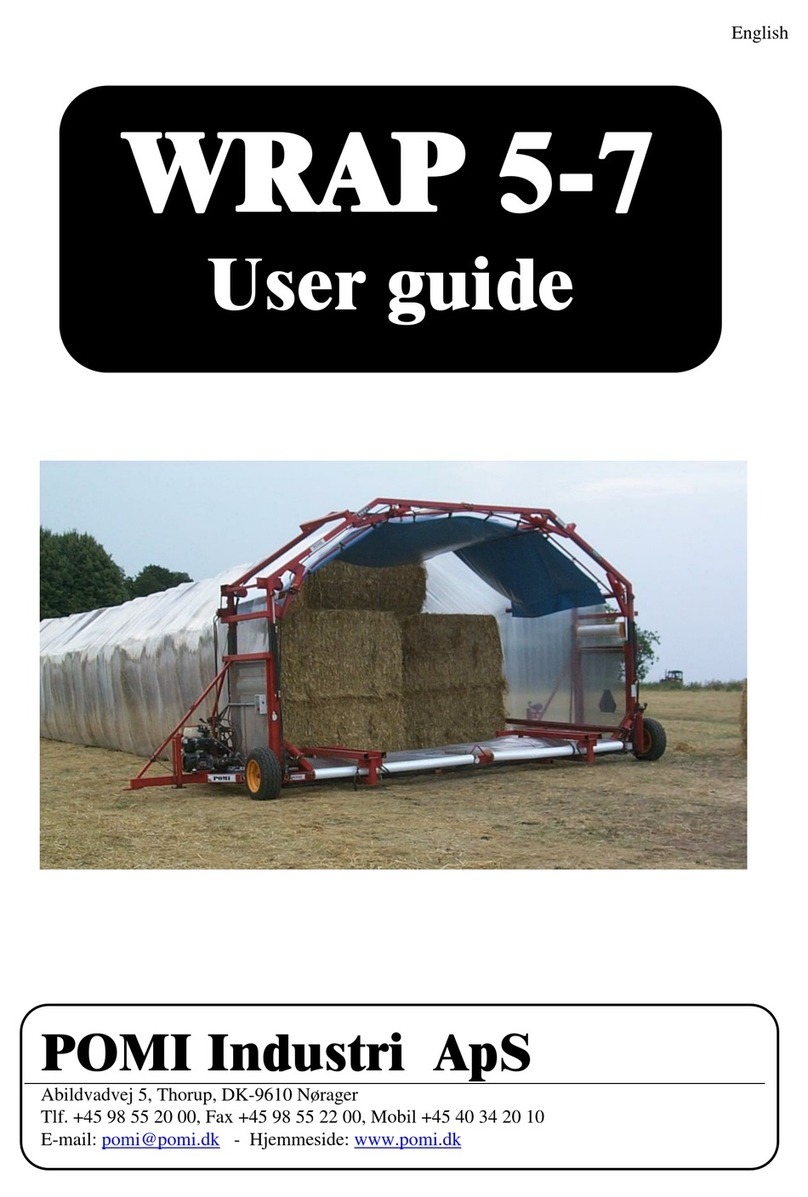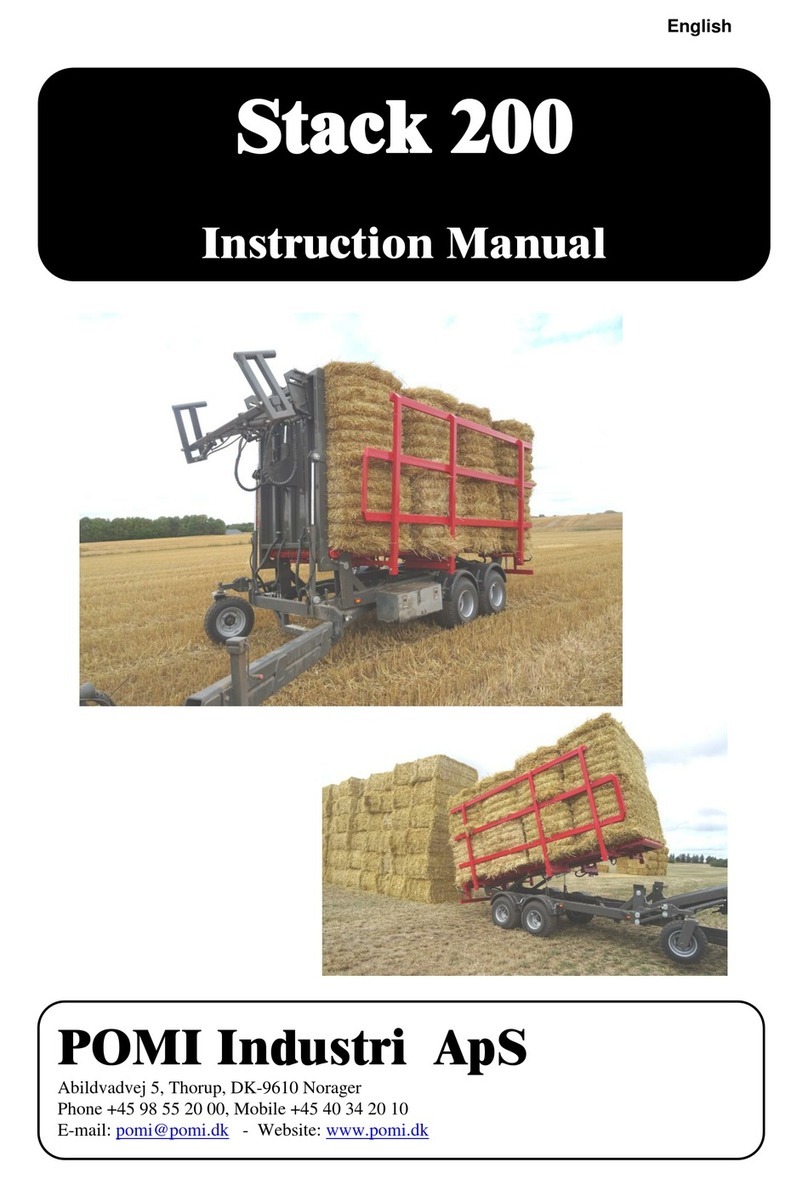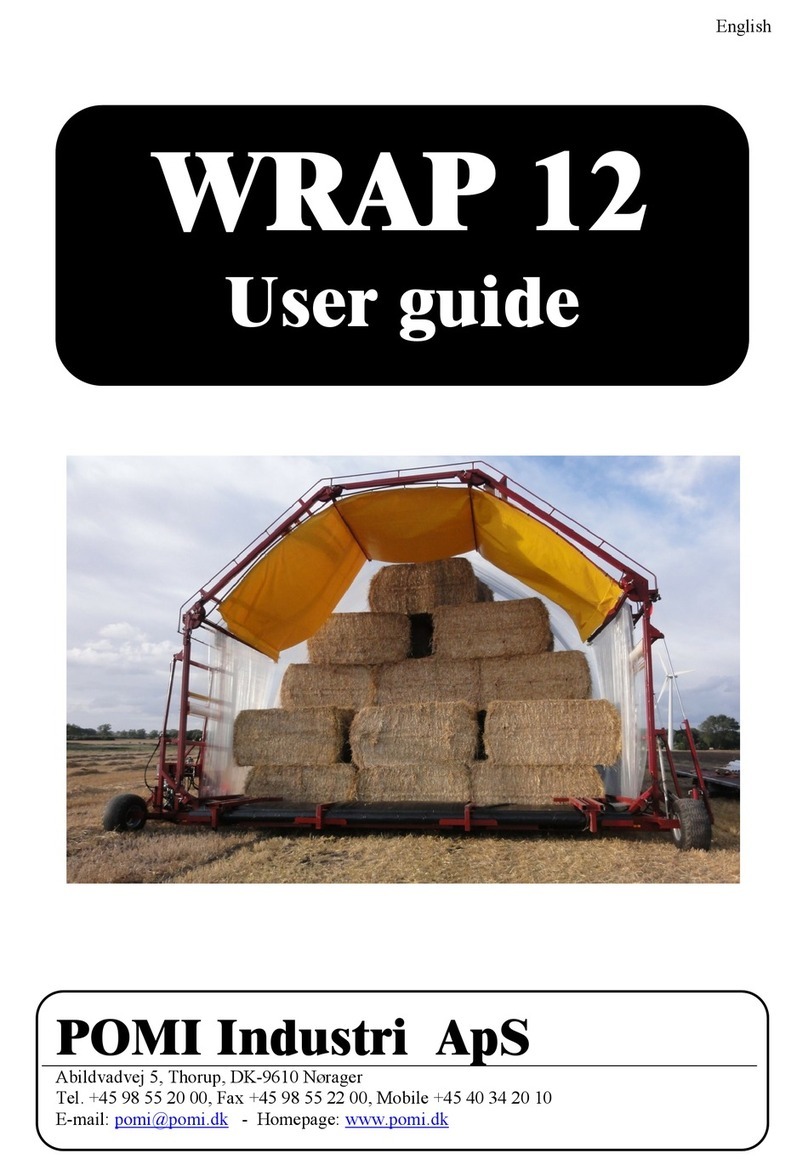
2
Contents
1. POMI KOMBI-PACK WRAPPER........................................................................................................... 3
2. PRECAUTION ............................................................................................................................................ 3
3. EU DECLARATION OF ACCORDANCE............................................................................................... 4
4. IDENTIFICATION OF THE MACHINE................................................................................................. 5
5. SOME ADVISE BEFORE STARTING WRAPPING SILAGE.............................................................. 5
6. BEFORE START ........................................................................................................................................ 5
7. REARRANGEMENT FROM TRANSPORT TO WRAPPING............................................................. 6
8. WRAPPING................................................................................................................................................. 6
WRAPPING OF SILAGE.................................................................................................................................... 6
WRAPPING OF STRAW,BIG-BALES WITH AMMONIAC ................................................................................. 6
WRAPPING OF MINI-BIG-BALES WITH AMMONIAC ...................................................................................... 6
WRAPPING OF STRAW FOR STORAGE ........................................................................................................... 6
9. CLOSING..................................................................................................................................................... 7
10. CHANGE FROM SILAGE OVER TO STRAW WRAPPING.......................................................... 7
11. ADJUSTING OF THE SENSORS ........................................................................................................ 8
12. ADJUSTMENT OF THE SUPPORT UNDER THE BALES............................................................. 8
13. CHANGE OF FOIL ROLLER.............................................................................................................. 8
14. FUNCTION OF THE MACHINE......................................................................................................... 9
14.1. ELECTRICAL BOX................................................................................................................................... 9
14.1.1. EL-DIAGRAM –BOX.......................................................................................................................... 10
14.1.2. ELECTRIC DIAGRAM –JUNCTION BOX............................................................................................... 11
14.2. REMOTE CONTROL.............................................................................................................................. 12
14.3. HYDRAULIC SYSTEM .......................................................................................................................... 12
14.4. FILM GUARD........................................................................................................................................ 12
15. MAINTENANCE.................................................................................................................................. 13
16. EQUIPMENT IN OPTION.................................................................................................................. 14
16.1. ROUND BALES EQUIPMENT.................................................................................................................. 14
16.2. HYDRAULIC RAISING OF THE FRAME.................................................................................................... 15
16.3. SILAGE BOX......................................................................................................................................... 16
16.4. EQUIPMENT FOR SILAGE...................................................................................................................... 16
16.5. RACK FOR BOTTOM FOIL...................................................................................................................... 17
16.6. BASKET FOR ROLLS OF FILM ................................................................................................................ 17
17. PROBLEMS.......................................................................................................................................... 18
Updated 13.06.2000































